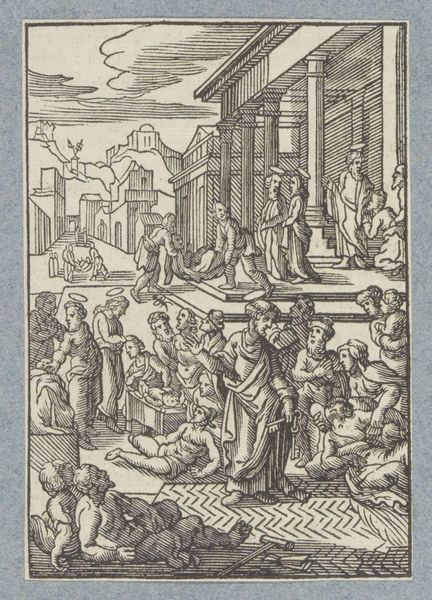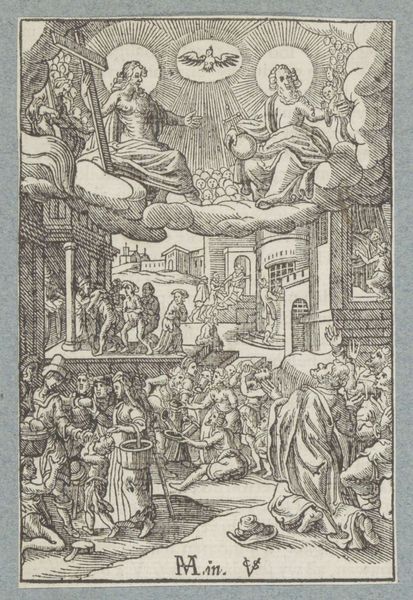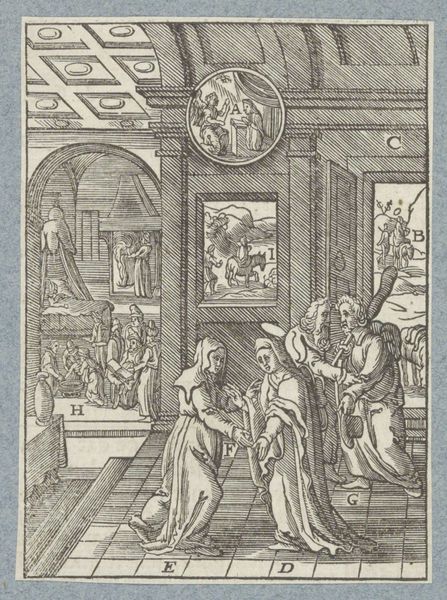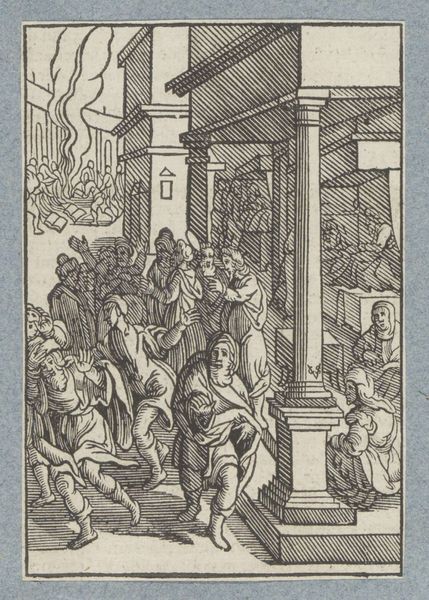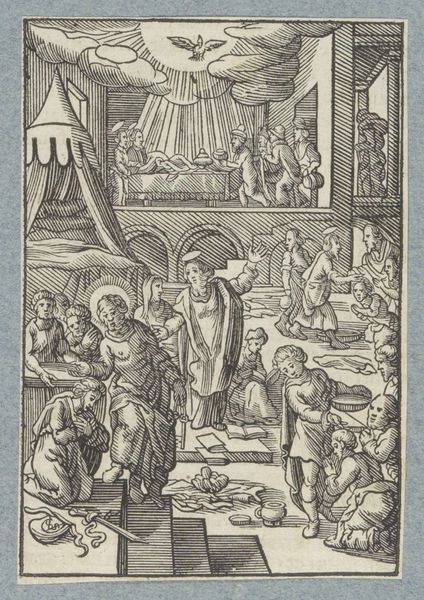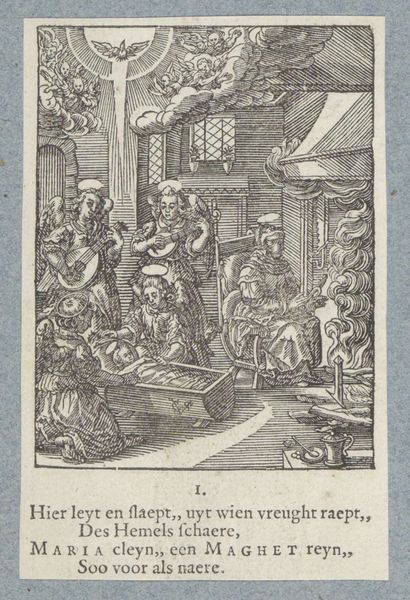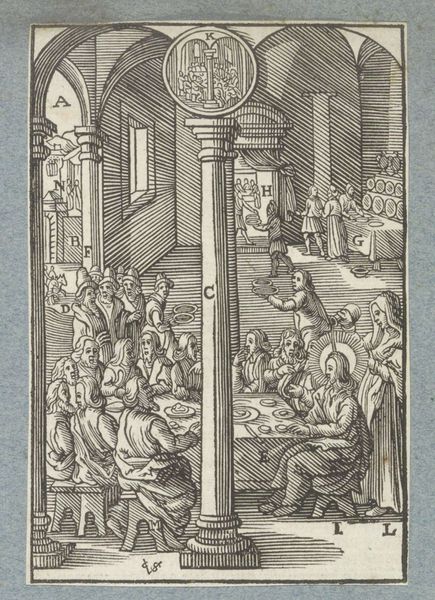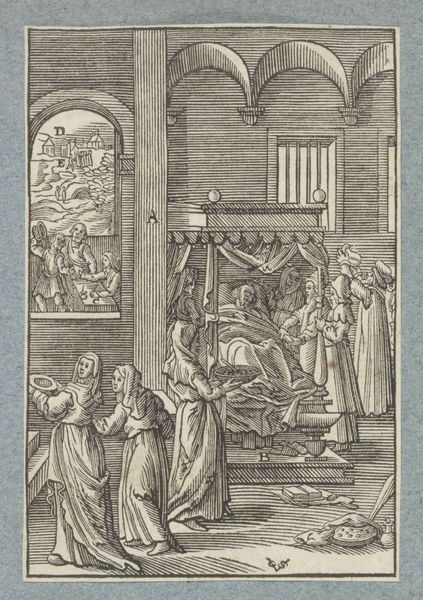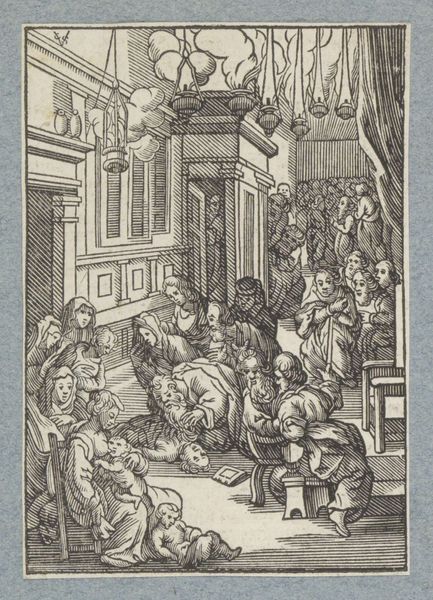
#
comic strip sketch
#
sketch book
#
junji ito style
#
personal sketchbook
#
sketchwork
#
pen-ink sketch
#
pen work
#
sketchbook drawing
#
storyboard and sketchbook work
#
sketchbook art
Dimensions: height 112 mm, width 75 mm
Copyright: Rijks Museum: Open Domain
Curator: Ah, this piece. Immediately makes me think of hidden laughter and whispered secrets. It’s intricate, like a perfectly choreographed dance. Editor: Well, that's one way to see it. I am more struck by the dense, somewhat frenetic energy. We’re looking at “The Wedding at Cana”, a work crafted in 1629 by Christoffel van Sichem II. It currently resides in the Rijksmuseum, offering us a glimpse into a pivotal biblical scene through the lens of the 17th century. Curator: 1629! Incredible. The meticulous linework almost makes it feel like I'm peering through a magical looking glass, watching this celebration unfold. It's interesting, it's not just a depiction; it's like catching a fleeting memory, distorted and delightful. Editor: Absolutely. And what’s key here is to contextualize this depiction within the social realities of its time. Biblical scenes weren't simply about religious instruction; they often mirrored contemporary social structures and power dynamics. Sichem's composition reflects a clear hierarchy in the depiction of the wedding guests, emphasizing their roles within society. Curator: It’s funny you mention hierarchy, because it's also in the serving of the drinks! Wine flowing, as they say. And it feels almost a bit playful and irreverent with those decorative elements on top. I'm curious about the intention behind it all. It almost hints at an absurdist commentary, masked in a classical rendering. Editor: Yes, let's delve a little deeper. There’s an inherent tension, as these religious artworks functioned as a didactic tool – enforcing norms of piety and obedience. But what's depicted, sometimes even unintentionally, could challenge these very norms. Think about the labor involved in the preparation. Who does this labor, and how are they represented, in contrast to the celebrating guests? These images reinforced – or inadvertently questioned – assumptions about who matters. Curator: So true. And isn't it odd that even in this rather "crowded," almost chaotic rendering, I sense something deeply quiet and still at the center of it? Editor: Perhaps that’s the divine made visible within the social swirl of humanity. Thank you for sharing such poignant perspectives; this scene feels ever more complex and relevant after examining it with you. Curator: And thank you. It's in these very layered stories that art breathes its vibrant truth.
Comments
No comments
Be the first to comment and join the conversation on the ultimate creative platform.
